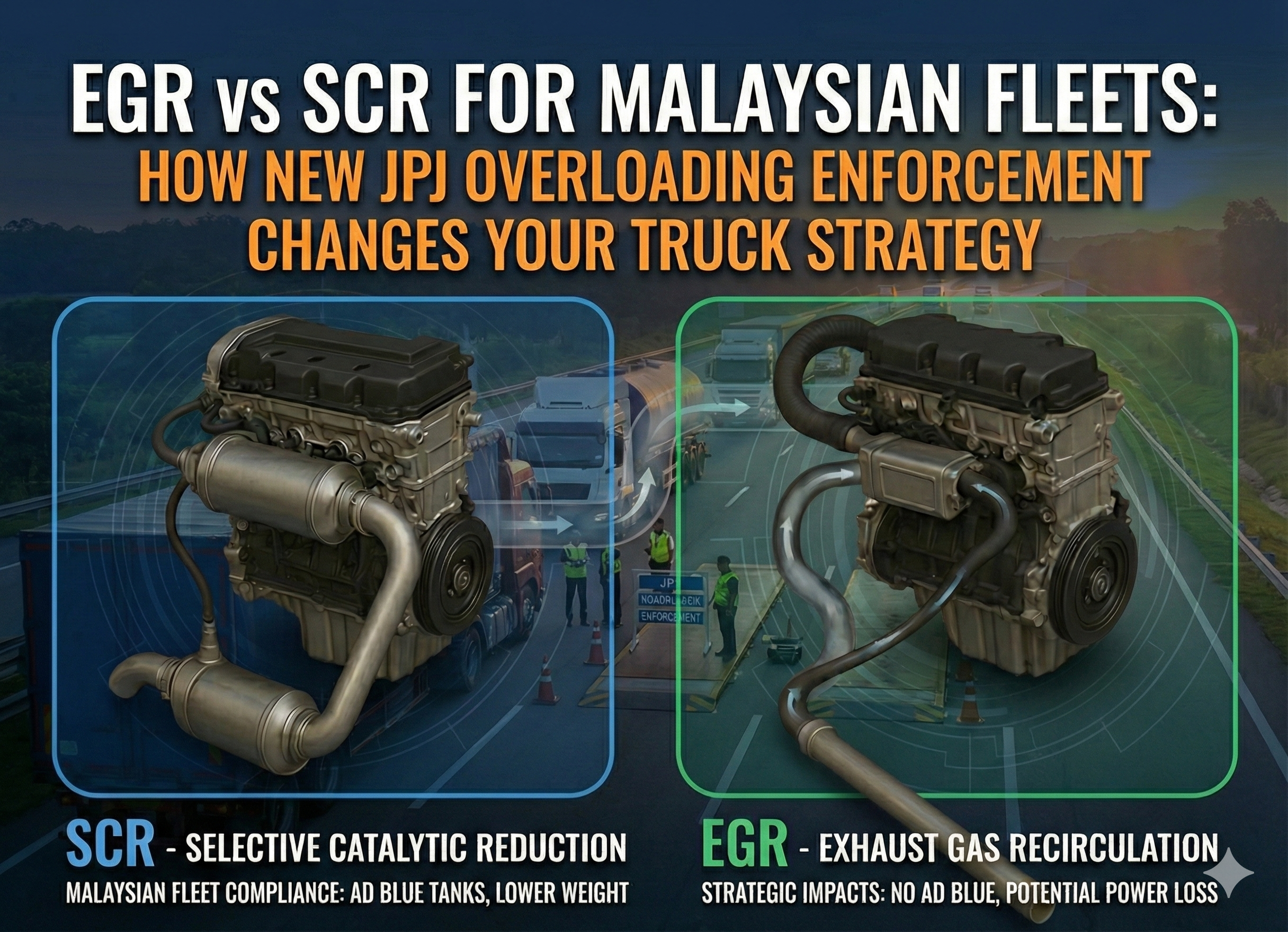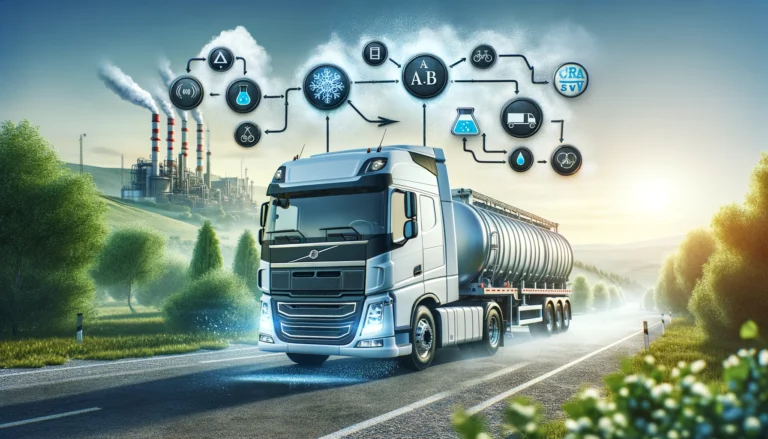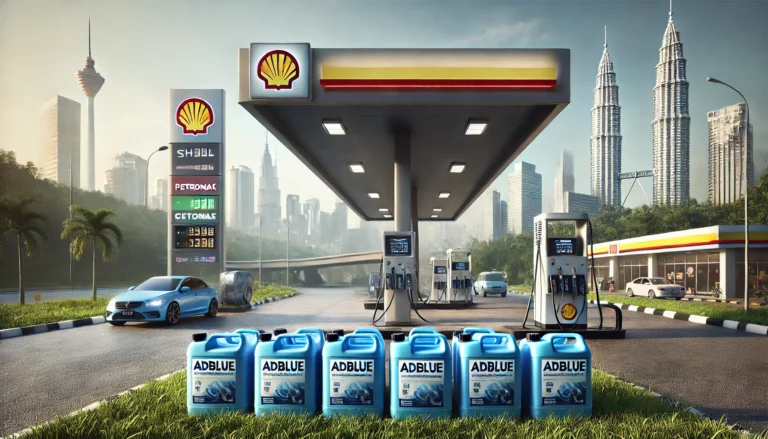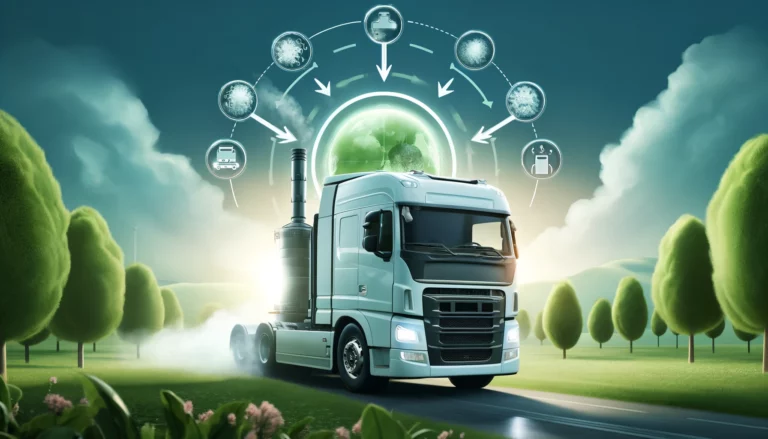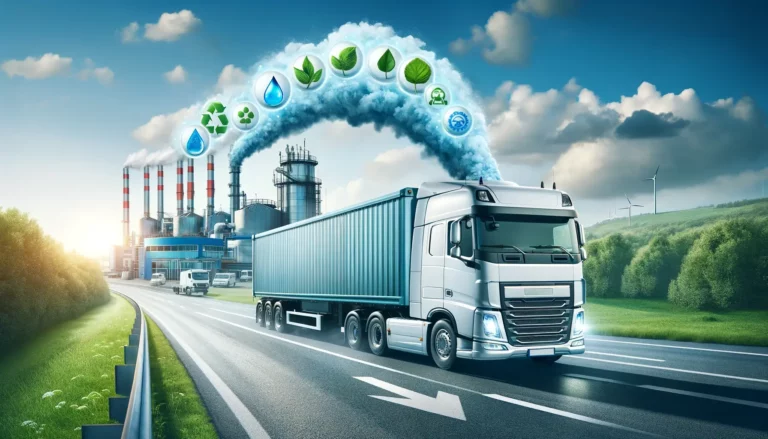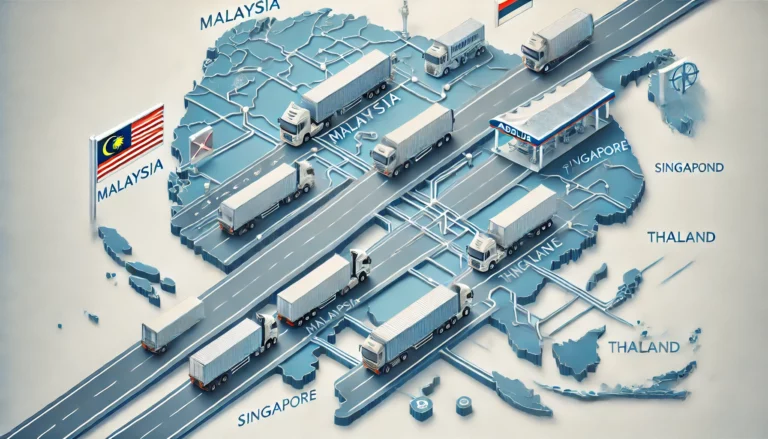As Malaysia tightens JPJ enforcement on overloading, many fleet operators are reassessing whether their current trucks can keep up with the new operating reality. The industry has long relied on overloading to maintain delivery volume, but with stricter checks and higher penalties, companies now must depend on engine efficiency, cleaner technology, and better payload optimisation. This is where the difference between EGR (Exhaust Gas Recirculation) and SCR (Selective Catalytic Reduction) becomes more important than ever.
Understanding how these two emission‑control technologies work helps operators decide whether to upgrade, purchase additional units, or transition to newer Euro‑standard trucks that offer better compliance and long‑term cost benefits.
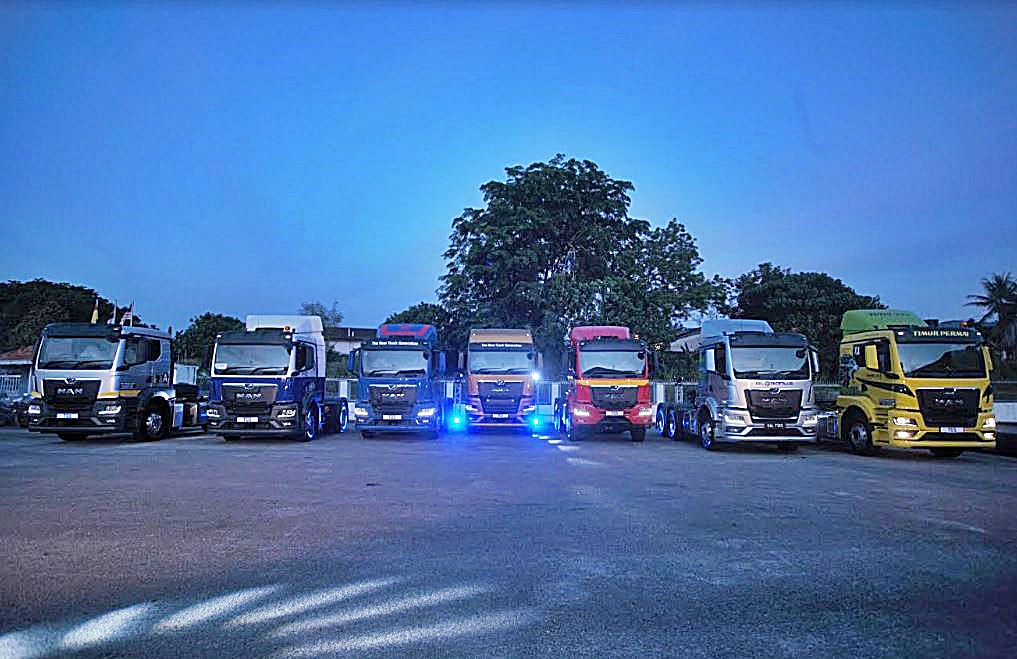
What is EGR?
EGR reduces nitrogen oxide (NOx) emissions by recirculating a portion of the exhaust gas back into the engine’s intake. This lowers combustion temperature and limits NOx formation at the source.
For older Euro 3 and some Euro 4 trucks, EGR was popular because it did not require any additional fluid such as AdBlue. It was a simpler solution with fewer components. However, it also meant higher engine load, higher fuel consumption in some conditions, and reduced efficiency when trucks operate under heavy duty cycles—common in long‑haul and construction delivery.
With the new anti‑overloading enforcement, trucks that depend heavily on EGR may feel the pressure because they no longer have the same buffer to compensate with extra payload.

What is SCR?
SCR uses a catalyst system and AdBlue to convert harmful NOx in the exhaust into harmless nitrogen and water vapour. Instead of reducing NOx inside the engine, it treats the emissions after combustion.
This approach allows the engine to run at higher efficiency with better fuel burn. That is why Euro 5 and Euro 6 trucks, which rely on SCR, often deliver stronger torque, smoother performance, and improved economy—especially under full load.
In a period where overloading can no longer be a fallback strategy, operators benefit from trucks that deliver maximum legal payload without compromising power.
Why the Difference Matters Now
The biggest shift in Malaysia today is not only about emissions standards but how they intersect with operational risk. When a truck is flagged for overloading, it disrupts schedules, increases downtime, and raises unexpected costs. With stricter enforcement, companies need vehicles that offer:
- Better fuel efficiency under legal payload
- Lower risk of black smoke and emission‑related compounds
- Stable performance on long distances
- Compliance with Euro‑standard expectations for the next decade
SCR-equipped trucks excel in these areas because the engine can be optimised for output while the SCR system manages emissions. Many fleet managers in Malaysia now view SCR as the safer long‑term choice.
Impact on Purchasing Decisions
Companies that previously operated fewer trucks but maximised payload might now require additional units to maintain delivery volume under legal limits. When expanding fleets, several considerations come into play:
- Fuel efficiency: SCR trucks generally deliver better kilometres per litre.
- Maintenance balance: EGR systems can accumulate soot internally, while SCR systems require AdBlue but keep the engine cleaner.
- Future compliance: As Malaysia moves towards stricter environmental standards, Euro 4/5/6 will become the benchmark.
- Resale value: SCR-equipped trucks tend to retain better value because they meet higher standards.
Upgrading to SCR units may require AdBlue planning, but the long-term efficiency and compliance benefits often outweigh operational adjustments.
Which One Should Malaysian Fleet Owners Choose?
For operators expanding their fleet to comply with JPJ’s enforcement, SCR trucks generally provide better long-term stability. EGR solutions still work for lighter applications or smaller fleets, but for heavy use, long-haul transport, and companies that must avoid operational disruptions, SCR offers clearer advantages.
As the transport sector transitions into a stricter regulatory environment, choosing trucks with stronger efficiency and cleaner emissions is no longer optional—it is part of maintaining competitiveness and operational continuity.
Ready to Transition? BlueDiesel Supports Your Move to SCR
As more companies adjust their fleets to comply with JPJ’s tightened overloading enforcement, the shift toward SCR-equipped trucks becomes a practical and strategic decision. BlueDiesel supplies high-quality AdBlue® across Malaysia, ensuring your SCR vehicles run efficiently, cleanly, and consistently.
Whether you’re upgrading a few units or expanding an entire fleet, BlueDiesel helps you maintain compliance, protect engine performance, and keep every delivery on schedule.

